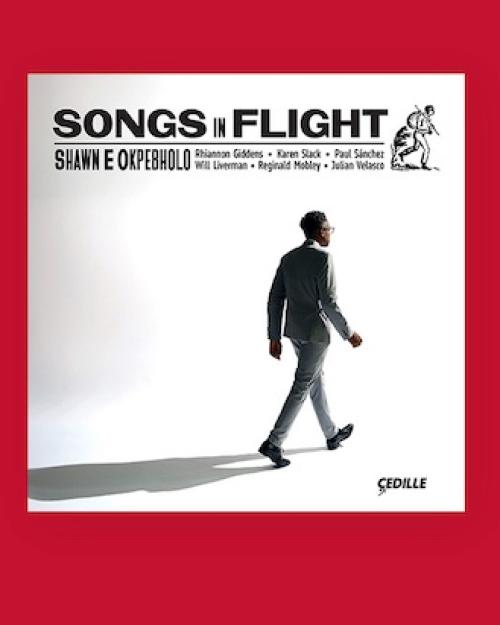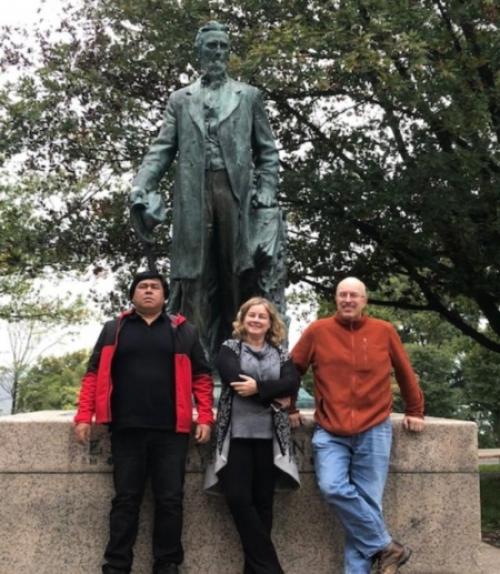When linguistics Ph.D. candidate Simone Harmath-de Lemos started studying the indigenous Bororo language of Brazil, she was excited to expand her knowledge of her own culture — she has heard from oral accounts that one of her foremothers was a Bororo.
With around 900 speakers, Bororo is one of the 40 percent of languages around the world in danger of dying, said Mats Rooth, linguistics professor and Harmath-de Lemos’ advisor. Linguists and anthropologists around the world are interested in preserving these languages, many of which don’t have extensive written forms, Rooth said. As a linguist who grew up in Brazil, Harmath-de Lemos knows that the timing is critical for preserving indigenous languages in Brazil.
Harmath-de Lemos focuses on the prosody of the language – its sounds, intonations and rhythms. She uses computational methodology to study these phenomena, by constructing computational systems that can “hear” distinctions in prosody. She plans to use some of the same tools in studying the Bororo language.
She met Félix Rondon Adugoenau, Adugo Enawudo, Badojeba Arua, Badojeba Cebegiwu, Badojeba, Ecerae (Bororo introduce themselves with their name, the name of their mother – if she is alive – the name of the group, sub-clan, and clan to which they belong) through a fellow researcher and has been working with him for more than two years.She traveled to Brazil for field research in summer 2016, but was disappointed in the recording quality she could get there. So she worked to find a way to bring Adugoenau to campus this fall.
Harmath-de Lemos brought Adugoenau to campus for one month this fall, with the help of a grant from Cornell’s Institute for the Social Sciences, to record hours of the Bororo language in a soundproof booth in the Department of Linguistics. In addition to the grant from ISS, Adugoenau’s visit was also sponsored by the Department of Linguistics, the Latin American Studies Program, the Cognitive Science Program, and the Department of Romance Studies.
When Adugoenau arrived on campus, Harmath-de Lemos spent some time just listening to him share information about his culture, language and people before they got down to recording.
“I have always been concerned with the indigenous languages of Brazil and how those languages may help indigenous people to preserve their culture,” Adugoenau said through Harmath-de Lemos, who interpreted from Portuguese to English.
First, they worked on a list of 100 words, then moved on to 100 sentences that Felix created. Then they made recordings of excerpts of two of the Bororo chants and its “whistling language,” literally words that are whistled.
(Listen to examples of the Bororo language below. In the first, Adugoenau uses the whistling language to say the Bororo word for woman. In the second, Adugoenau speaks in Bororo about the idea of creating a book to teach Bororo to children.)
“It was used for hunting and fishing,” Harmath-de Lemos said, “because it carries farther than a spoken language.”
During all of these interactions, Harmath-de Lemos made a point of being very cognizant of community traditions and protectiveness of their beliefs. All of the recordings they made were approved by community elders, as way of respecting the communities wishes about what pieces of and how their language and culture are shared with society at large, she said.
Since her research began, she has learned so much more than just the language – she has a greater understanding of the beauty and detail of many Bororo traditions, and is working with Adugoenau on a way to preserve stories in accordance with how the Bororo view storytelling.
“The Bororo were among the indigenous peoples of Brazil to have an early writing system, due to their early contact with the Salesian order. They see stories as only having value if they are told by two people, so that they are enriched by the storytellers’ own experiences,” shares Harmath-de Lemos. “For this reason, even though the stories have been written, they are never used, because the Bororo see them as “dead,” and it would be a bad omen to use them.” Adugoenau and Harmath-de Lemos are hoping that their research will lead to a way of writing stories that will be true to how stories should be told in Bororo culture.
With Adugoenau's help to find out how to best serve the Bororo people, Harmath-de Lemos and Dr. Rooth plan to develop tools that encourage the people to keep speaking their language and which can assist with the language preservation, such as updated dictionaries and mobile apps.
New computational tools are giving researchers like Harmath-de Lemos a more efficient way to preserve languages. Researchers can use these recordings, along with speech recognition technology, computational methods and machine learning to make the process of language documentation easier and faster, Rooth said.
“By making recordings and transcripts, we can construct a phonetic vocabulary,” Rooth said. This initial vocabulary can be used to create a longer vocabulary, then shared, perhaps through an app that could hear and speak Bororo, and expanded through crowdsourcing, Harmath-de Lemos said.
“We would love to create something that is interactive and that would make people want to keep speaking their language,” she said.
Harmath-de Lemos plans to continue to collaborate with Adugoenau on her project and Adugoenau has invited her to travel to Meruri, a Bororo community, next summer to encourage them to work to preserve their language.
“We want to find out from the people what they want, but Adugoenau is hoping that we can talk to the women and teachers in Meruri about the importance of teaching the children the language so it is preserved,” she said. "In addition to my language documentation work", Simone says, "the ultimate goal would be to train members of the Bororo people to create local linguists, empowering the communities to document, preserve, and teach their language." Harmath-de Lemos said that it is her and Adugoenau’s dream to expand this type of project to the many indigenous peoples of the Mato Grosso region.
For Adugoenau, the project is a way to ensure that his cultural traditions are maintained.
“I would hope that all indigenous people would have an understanding that there is immense value in their language and that language is a beautiful and intangible heritage,” Adugoenau said. “You should be proud of using and maintaining your language.”





